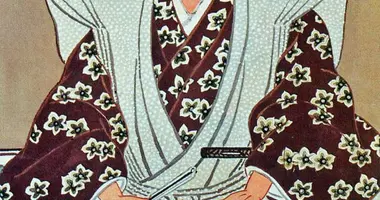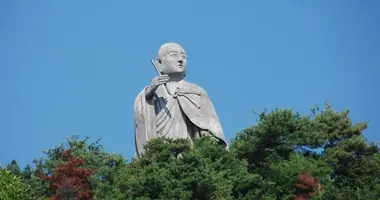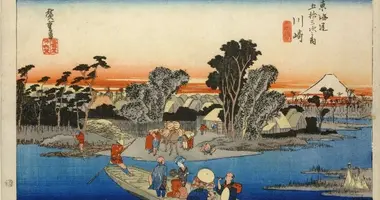History of Osaka Castle
- Published on : 23/06/2024
- by : Japan Experience
- Youtube
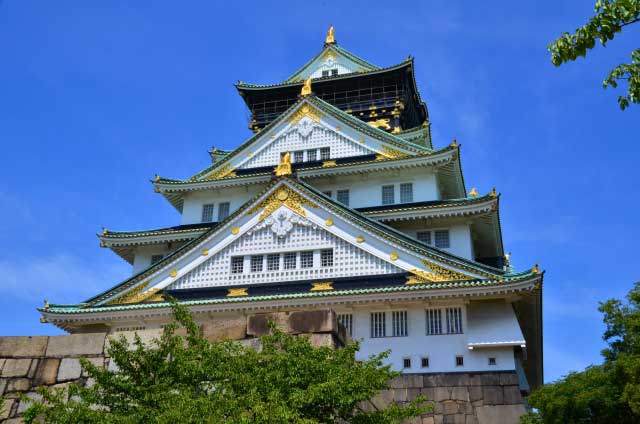
Osaka Castle
Osaka Castle, an iconic symbol of Japan's rich feudal history, has stood as a testament to the country's tumultuous past for over four centuries. Built in 1583 by the powerful warlord Toyotomi Hideyoshi, the castle has witnessed numerous battles, reconstructions, and transformations throughout its long and storied existence. From its origins as a stronghold of unification to its current status as a beloved cultural landmark, Osaka Castle's history is inextricably intertwined with the narrative of Japan's journey towards modernization. This article delves into the fascinating chronicle of Osaka Castle, exploring its construction, destruction, rebirth, and enduring legacy in Japanese culture.
Origins and construction under Toyotomi Hideyoshi
The story of Osaka Castle begins with Toyotomi Hideyoshi, one of Japan's most influential historical figures. Rising from humble peasant origins to become the country's de facto ruler, Hideyoshi sought to create a castle that would serve as both a symbol of his power and a formidable military stronghold. Construction of Osaka Castle began in 1583 on the site of the former Ishiyama Hongan-ji temple, which had been destroyed by Hideyoshi's predecessor, Oda Nobunaga.
Hideyoshi's vision for Osaka Castle was grandiose and unprecedented in scale. The castle was designed to be the largest and most impressive in Japan, surpassing even Nobunaga's Azuchi Castle. The main keep, or tenshu, stood five stories tall on the outside but contained eight internal levels. Hideyoshi spared no expense in its construction, adorning the exterior with gold leaf and intricate ornaments to impress visitors and intimidate enemies.
The castle's defenses were equally impressive. Massive stone walls, some reaching heights of up to 20 meters, surrounded the complex. These walls were constructed using a technique called burdock piling, which involved interlocking massive granite boulders without mortar. The stones, many of which were transported from quarries near the Seto Inland Sea, bore the crests of the various daimyo who contributed to the castle's construction.
By 1585, the inner donjon was completed, but Hideyoshi continued to expand and fortify the castle over the next decade. In 1597, the castle was finally completed, standing as a testament to Hideyoshi's power and ambition. However, Hideyoshi would not live long to enjoy his creation, as he passed away the following year in 1598.
The Siege of Osaka and fall of the Toyotomi clan
After Hideyoshi's death, control of Osaka Castle passed to his young son, Toyotomi Hideyori. However, the stability of the Toyotomi regime was soon threatened by the rising power of Tokugawa Ieyasu, who had been one of Hideyoshi's most powerful vassals. Tensions between the Toyotomi and Tokugawa factions eventually erupted into open conflict, culminating in the Siege of Osaka in 1614-1615.
The siege was divided into two campaigns: the Winter Campaign of 1614 and the Summer Campaign of 1615. During the Winter Campaign, Osaka Castle's defenses proved formidable, with its massive stone walls and deep moats repelling Tokugawa attacks. The Toyotomi forces, led by the skilled commander Sanada Yukimura, managed to hold off the numerically superior Tokugawa army.
However, the Summer Campaign of 1615 proved disastrous for the Toyotomi clan. Tokugawa forces breached the castle's outer defenses and engaged the Toyotomi army in a series of battles around Osaka. The final confrontation, the Battle of Tennōji, saw the complete defeat of the Toyotomi forces. Hideyori and his mother, Yodo-dono, committed suicide as Osaka Castle fell to the Tokugawa army. The great castle that Hideyoshi had built was set ablaze, marking the end of the Toyotomi legacy and solidifying Tokugawa rule over Japan.
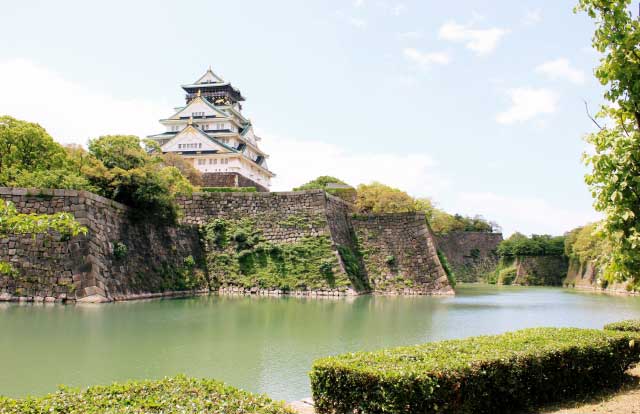
Osaka Castle
Reconstruction and expansion by the Tokugawa shogunate
Following the fall of Osaka Castle, Tokugawa Ieyasu ordered its reconstruction in 1620. This new iteration of the castle was built on the same site but with significant changes to its layout and design. The rebuilding of Osaka Castle was overseen by Tōdō Takatora, a master castle architect, under the direction of Tokugawa Hidetada, Ieyasu's son and successor as shogun.
The Tokugawa version of Osaka Castle was designed to be even more imposing than its predecessor. The stone walls were made higher and thicker, and the moats were deepened. The main keep was rebuilt as a five-story structure, standing taller than Hideyoshi's original tower. The interior was also redesigned to serve the administrative needs of the Tokugawa shogunate.
This reconstruction served multiple purposes for the Tokugawa regime. It demonstrated their power and authority over the former Toyotomi stronghold, while also providing a formidable defensive position in western Japan. The castle became an important center for Tokugawa control over the region, with a large garrison of samurai stationed there.
However, the reconstructed castle was not destined to last. In 1665, the main tower was struck by lightning and burned down. Although other parts of the castle complex remained intact, the iconic tenshu was not rebuilt, leaving Osaka Castle without its most recognizable feature for centuries.
Decline and destruction during the Meiji Restoration
As Japan entered the modern era with the Meiji Restoration in 1868, Osaka Castle's role and significance began to change dramatically. The feudal system that had given birth to and sustained such fortresses was dismantled, and many castles across Japan fell into disrepair or were intentionally demolished.
During the upheaval of the Boshin War, which marked the end of the Tokugawa shogunate, Osaka Castle was briefly occupied by imperial loyalist forces. In the aftermath, much of the castle complex was repurposed or simply abandoned. The Japanese government, eager to modernize the country, saw little value in maintaining these relics of feudal power.
In the following decades, parts of Osaka Castle were converted for military use. The castle grounds became a major army arsenal, producing weapons and ammunition for Japan's growing imperial ambitions. This repurposing saved some structures from demolition but also exposed the site to new dangers.
During World War II, Osaka Castle suffered significant damage from air raids. The arsenal was a prime target for Allied bombing, and several historic buildings within the castle complex were destroyed. By the end of the war, much of what remained of the once-mighty fortress lay in ruins, a shadow of its former glory.
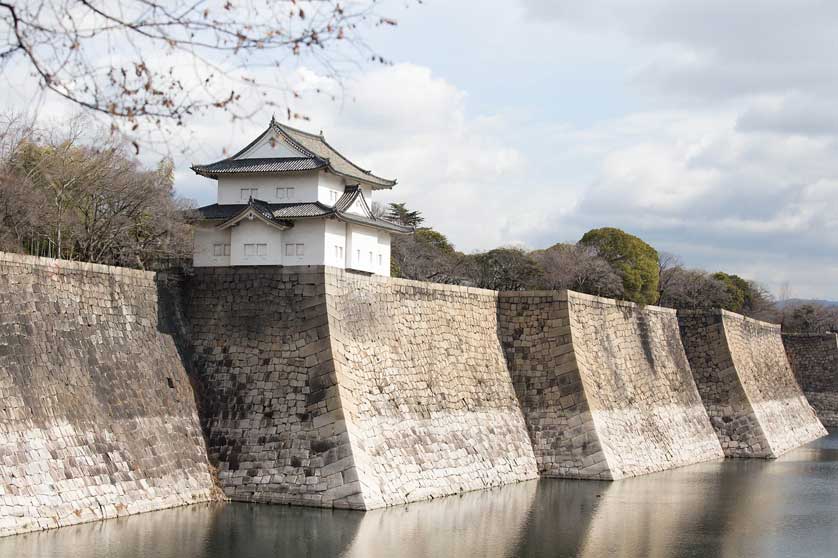
Osaka Castle is one of the largest castles in Japan with huge stone walls
Modern reconstruction and current state
The post-war period saw a renewed interest in preserving Japan's cultural heritage, including its historic castles. In 1931, the main tower of Osaka Castle was reconstructed using modern building techniques, including the use of concrete. This reconstruction was based on historical photographs and drawings of the Tokugawa-era keep, aiming to restore the castle's iconic silhouette to the Osaka skyline.
However, it wasn't until 1995 that a major restoration project was undertaken to return the castle to its Edo-period splendor. This project, completed in 1997, focused on restoring the exterior of the main tower to more closely resemble its historical appearance. The interior was modernized to function as a museum dedicated to the castle's history and the life of Toyotomi Hideyoshi.
Today, Osaka Castle stands as one of Japan's most popular tourist attractions, drawing millions of visitors each year. The castle grounds, now a public park, offer a peaceful retreat in the heart of Osaka, particularly famous for its cherry blossoms in spring. While the current structure is a modern reconstruction, it serves as an important link to Japan's past and a symbol of Osaka's enduring spirit.
Architectural features and layout of Osaka Castle
Osaka Castle's architecture exemplifies the pinnacle of Japanese castle design during the late 16th and early 17th centuries. The castle complex is built on two raised platforms of landfill supported by sheer walls of cut rock, a technique known as burdock piling. These stone walls, some reaching heights of up to 20 meters, are among the most impressive features of the castle.
The main keep, or tenshu, is the centerpiece of the castle. Standing five stories tall on the outside, it actually contains eight internal floors. The current reconstruction faithfully replicates the Edo-period exterior, complete with white plastered walls, dark wooden accents, and gold-leafed ornaments, including the famous golden shachi (mythical tiger-fish) roof ornaments.
Surrounding the main keep are a series of defensive structures, including:
- The Ote-mon Gate, the main entrance to the castle
- Several yagura (turrets) strategically placed along the walls
- The Kinzo and Enshogura storehouses
- Multiple baileys (maru) that formed concentric rings of defense
The castle grounds also feature the Nishinomaru Garden, a beautiful landscape garden that offers excellent views of the main tower. This garden, along with the numerous cherry and plum trees throughout the castle park, makes Osaka Castle a popular spot for hanami (cherry blossom viewing) in spring.

Osaka Castle seen against a dramatic sunset
Cultural significance and tourism at Osaka Castle
Osaka Castle holds a special place in Japanese culture and history. It represents not only a masterpiece of medieval Japanese architecture but also symbolizes the turbulent period of unification that shaped modern Japan. The castle's history, closely tied to figures like Oda Nobunaga, Toyotomi Hideyoshi, and Ieyasu Tokugawa, makes it a focal point for understanding Japan's transition from the Warring States period to the relative stability of the Edo era.
As a tourist attraction, Osaka Castle is one of the city's most visited sites. The castle museum offers visitors a chance to explore Japan's feudal history through exhibits featuring armor, weapons, and historical documents. Interactive displays and video presentations help bring the castle's dramatic past to life.
The castle also plays a significant role in local culture and events. It serves as a backdrop for numerous festivals and celebrations throughout the year, including:
- The Osaka Castle 3D Mapping Super Illumination event
- The Osaka Castle Music Festival
- Various historical reenactments and samurai demonstrations
For those interested in delving deeper into the history of Japanese castles, there are several books on Japanese castles available that provide comprehensive information on Osaka Castle and other famous fortresses across Japan.
In conclusion, Osaka Castle stands as a proud testament to Japan's rich cultural heritage. From its tumultuous beginnings under Toyotomi Hideyoshi to its current status as a beloved landmark, the castle continues to captivate visitors with its beauty and historical significance. As it looks out over the modern cityscape of Osaka, Osaka Castle serves as a bridge between Japan's feudal past and its vibrant present, inviting all who visit to step back in time and experience the grandeur of Japan's samurai era.
